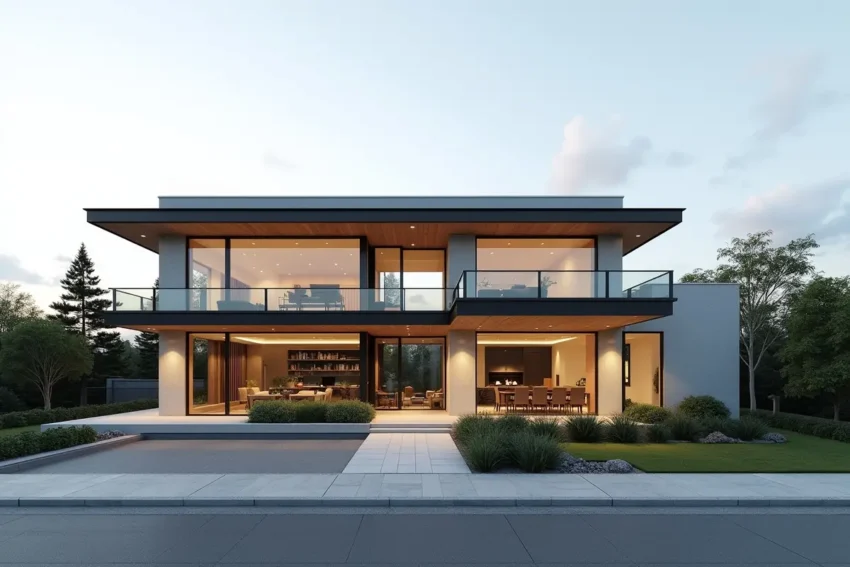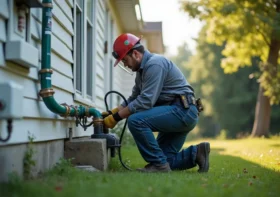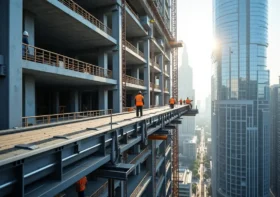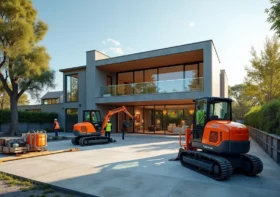Home Design Trends: What’s Shaping Modern Architecture Today

Home design has gotten a complete makeover lately, and it’s not just about what looks good anymore. Between climate concerns, working from home becoming normal, and technology taking over our lives, architects are basically having to rethink everything about how houses work.
The changes aren’t superficial either. We’re talking about fundamental shifts in how people want to live, what materials make sense, and how homes need to function in 2025. It’s pretty fascinating when you step back and look at what’s driving all these changes.
Contents
Going Green Isn’t Optional Anymore
Environmental stuff used to be something you’d add if you had extra budget. Now it’s baked into the design process from day one. Solar panels aren’t special features anymore – they’re just expected, and homes are being designed around them rather than trying to fit them in later.
The energy efficiency game has gotten serious too. New homes are being designed to generate more power than they use, with battery systems that can keep the lights on during outages and even sell power back to the utility company during peak hours. It sounds futuristic, but it’s happening right now.
Water conservation is another big focus. Rain collection systems, greywater recycling for gardens, and landscapes that don’t need constant watering are becoming standard. Some builders are even doing crazy things with permeable driveways and green roofs that help manage stormwater runoff.
Technology Changes Everything
Smart home tech has moved way beyond fancy thermostats. New houses are being designed with the assumption that everything will be connected and automated. That means running a lot more wiring, planning for equipment rooms, and designing spaces that work with multiple screens and devices.
The home office situation has forced some major rethinking too. People need dedicated work spaces with proper lighting, ventilation, and sound isolation. The dining room table as an office setup doesn’t cut it when you’re on video calls all day.
Companies such as IMSU are figuring out how to integrate all this tech stuff into their facade designs without making houses look like spaceships. It’s trickier than it sounds when you’re trying to hide solar panels, charging stations, and internet equipment while keeping things looking good.
Open Floor Plans Get Smarter
Those massive open spaces that were popular for years are being refined. People still want connected areas, but they also need spaces that can actually be used for different things throughout the day without everything feeling chaotic.
The trick now is creating flexible spaces that can transform from home office to dinner party central to kids’ play area without major furniture moving. This means thinking about lighting differently, using moveable partitions, and choosing furniture that can multitask.
Kitchen islands are still popular, but they’re getting more purposeful. Instead of just being huge countertops, they’re being designed with specific functions – prep areas, breakfast spots, storage solutions that actually make cooking easier rather than just looking impressive in photos.
Outdoor Living Gets Serious
The pandemic made everyone realize how much they missed being outside, and that’s showing up in home design in a big way. But we’re not talking about just adding a deck anymore. Architects are designing outdoor spaces that work year-round, with heating, weather protection, and proper lighting.
Outdoor kitchens are getting more sophisticated too. These aren’t just grills with countertops – they’re full cooking setups that let you prepare entire meals outside. The challenge is making them weather-resistant without looking like commercial kitchen equipment.
Private outdoor spaces are becoming more valuable than big front yards. People want intimate outdoor areas where they can relax without neighbors watching, and that’s changing how lots are being designed and used.
Materials Keep Getting Better
New materials are letting architects do things that weren’t possible before. Cross-laminated timber lets you build tall wooden structures that are actually stronger than steel in some applications. High-performance concrete can be shaped into complex forms that used to require multiple materials.
Metal cladding systems have gotten much more sophisticated too. They provide better insulation while maintaining those clean, modern looks that people want. Plus they integrate better with solar installations and other tech systems.
The sustainability angle is pushing material innovation too. Recycled content, low-impact manufacturing, and materials that can be recycled at end-of-life are becoming standard considerations rather than special features.
Health and Wellness Take Priority
Home design is finally acknowledging that houses should actually be good for the people living in them. This means prioritizing natural light, clean air, and materials that don’t release harmful chemicals into living spaces.
Circadian lighting systems that adjust throughout the day to support natural sleep patterns are becoming common. It’s not just about having dimmable lights anymore – these systems actually change color temperature to match natural daylight patterns.
Dedicated wellness spaces are showing up in more homes too. Whether it’s a yoga room, home gym, or just a quiet meditation space, people want areas specifically designed for physical and mental health. These spaces need special ventilation, acoustics, and lighting that regular rooms don’t require.
Where This All Leads
All these trends are creating homes that are more responsive to how people actually want to live. The challenge is integrating everything without making houses overly complicated or impossibly expensive. The best new designs manage to incorporate sustainability, technology, and wellness features while still feeling warm and livable rather than like science experiments.



